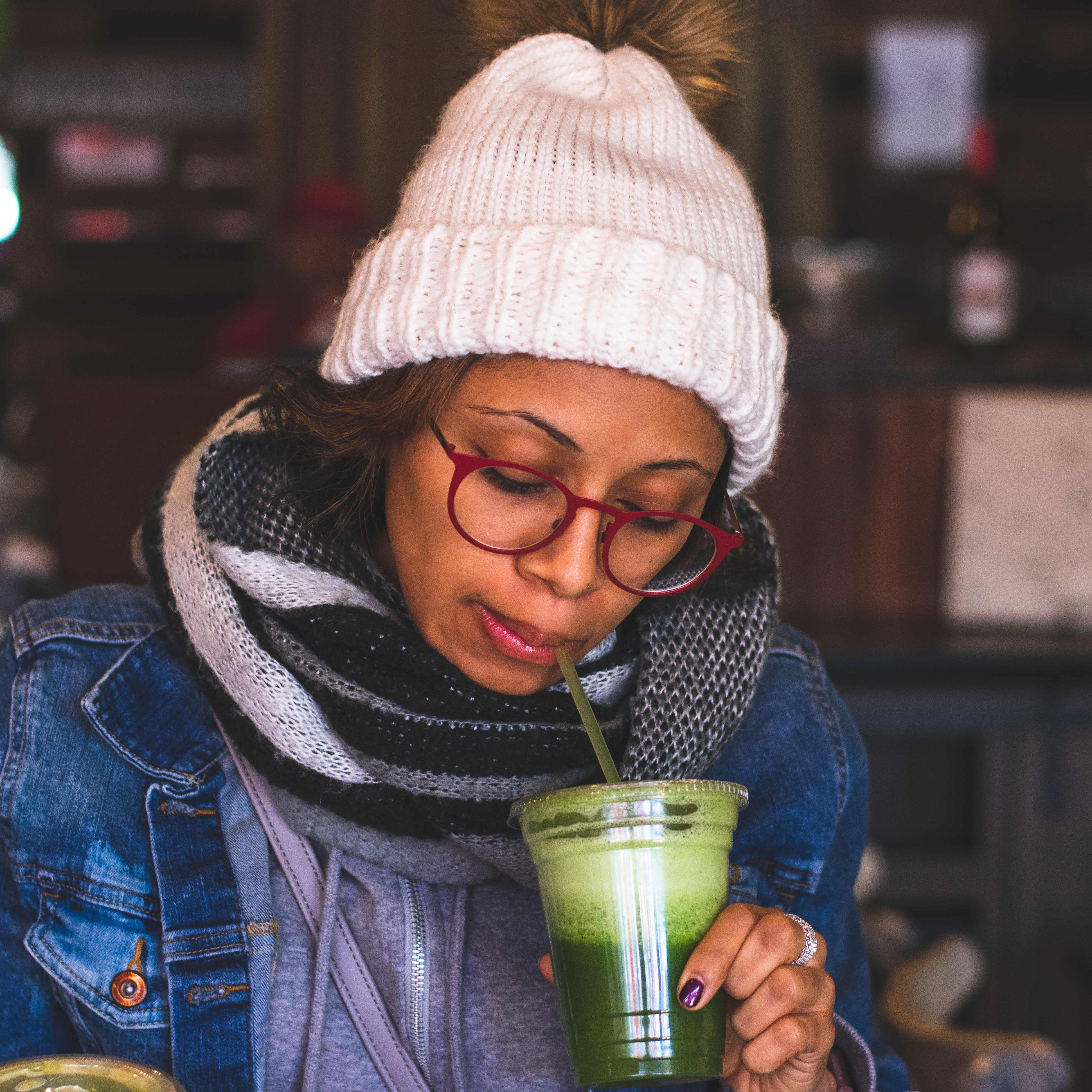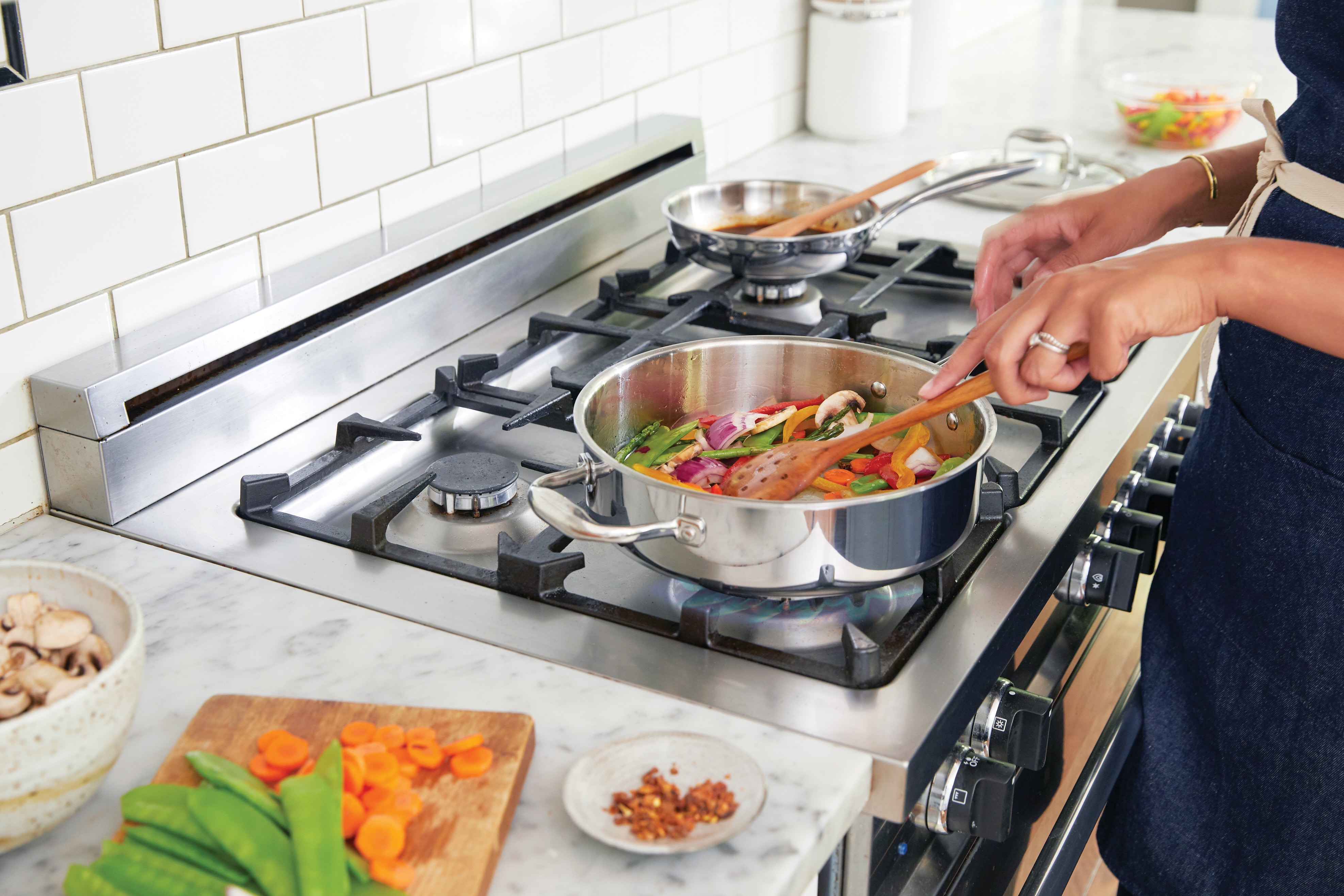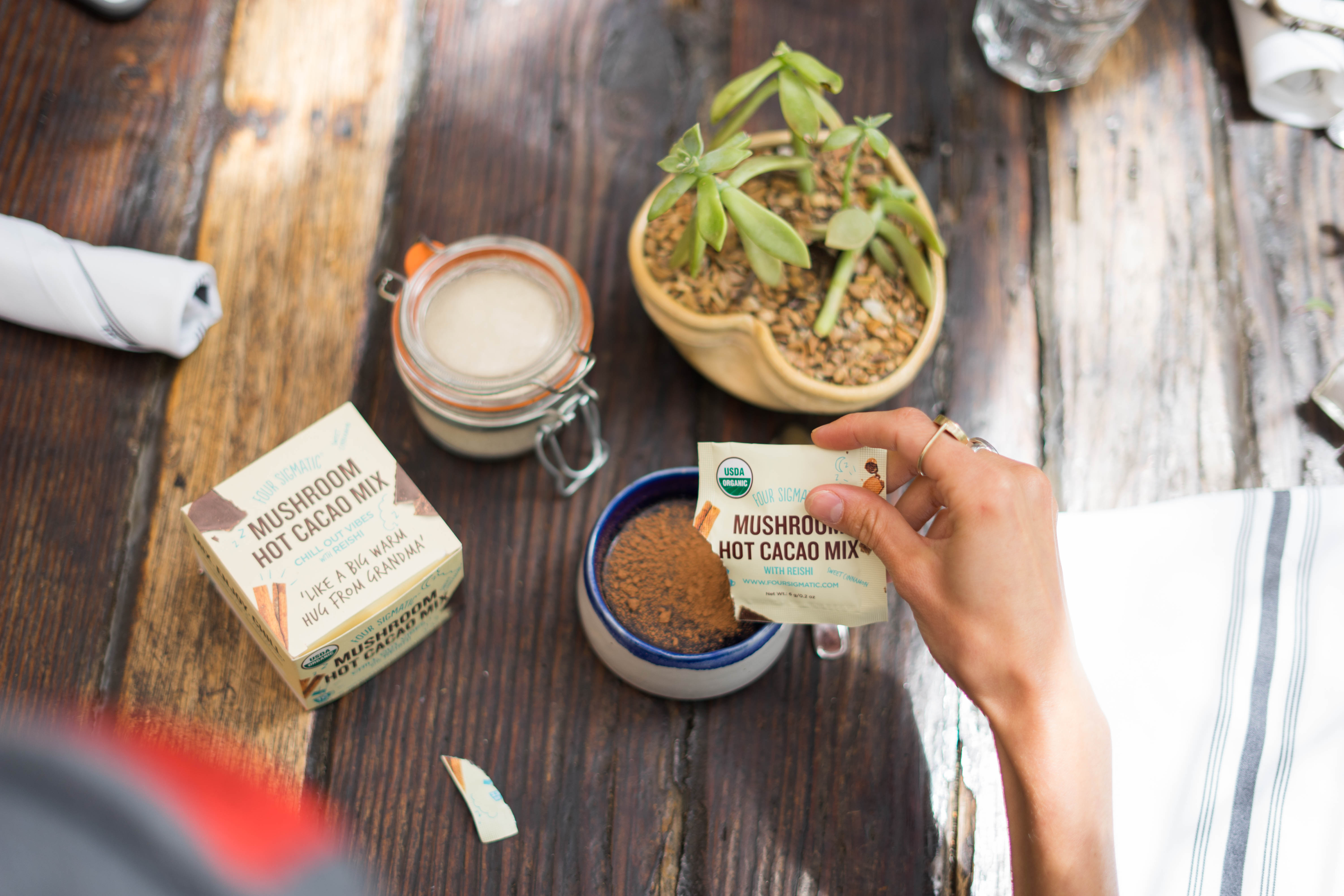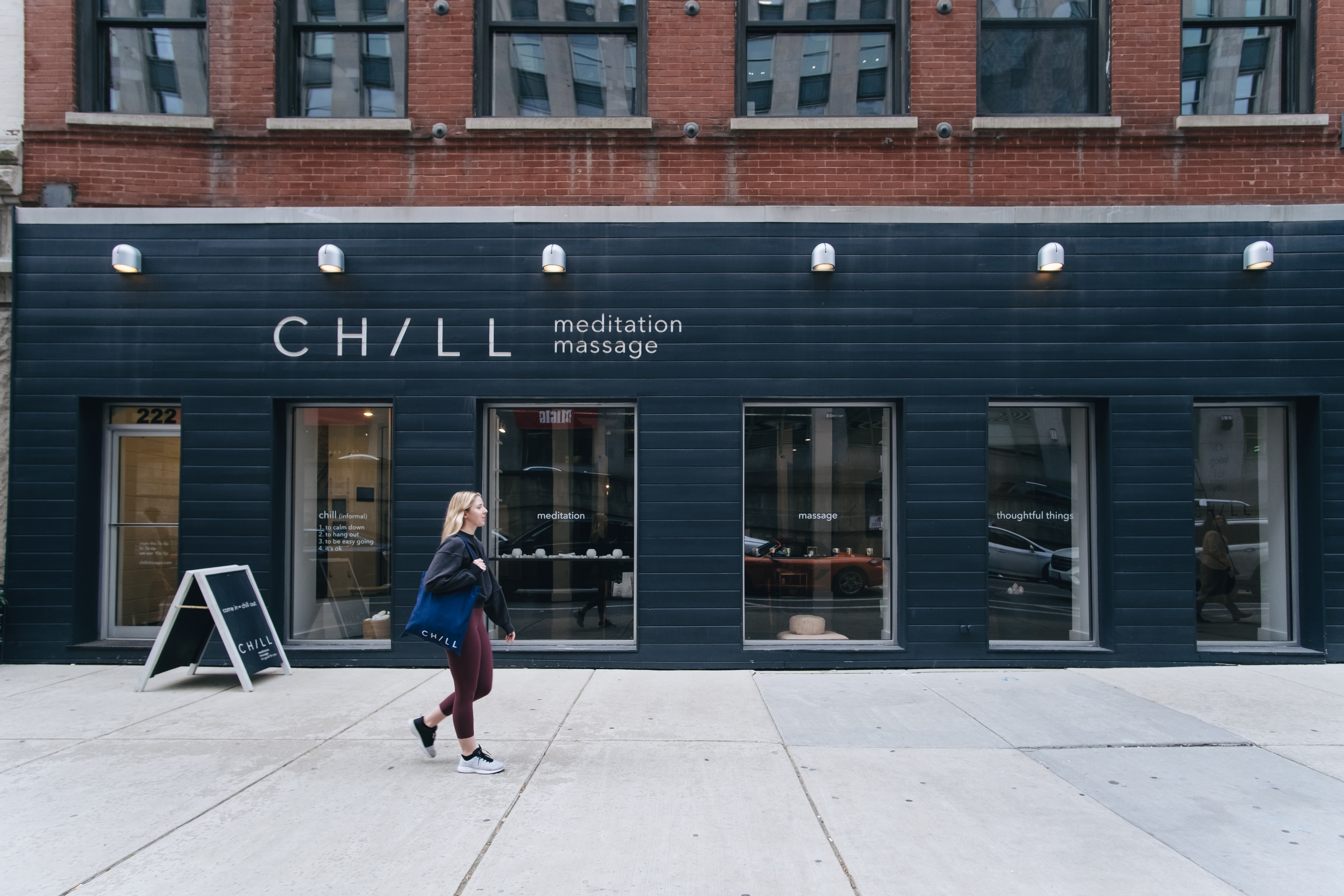Looking for new ways to elevate your wellness routine in 2020? From oat milk to adaptogens, we’ve explained some of the buzziest health trends of the year. Light your palo santo, get out your jade-roller, and give one of these trends a try.
Plant-Based Meat
Plant-based meat went mainstream in 2019 (even making an impact on Wall Street), and the industry is sure to keep growing in 2020. Requiring less land and water, and producing fewer fossil fuel emissions than meat from cattle, plant-based alternatives can possibly help the environment (although they’re not a perfect solution). Popular brands like Impossible Foods and Beyond Meat have also integrated into less-than-health-conscious chains like Dunkin Donuts and Burger King. Or, you can try many of these options at your local grocery store.
Sober Curious Movement
Getting tired of hangovers, dropping your entire paycheck on a night out, and wasting those scorched calories from your SoulCycle class on bottomless mimosas? Well, you’re not alone.
The “sober curious” or “sober sometimes” movement started as many of our resolutions do — to ring in the new year on a healthier note. First, there was “Dry January,” which has led to “Dry July” and “Sober September.” In December 2018, author Ruby Warrington released the book “Sober Curious: The Blissful Sleep, Greater Focus, Limitless Presence, and Deep Connection Awaiting Us All on the Other Side of Alcohol” to much praise. If you’re interested in learning more about the sober curious movement, or getting involved, there are even social groups committed to sober soirees and mouthwatering mocktails. You can also read this article from NPR diving deeper into the movement and the sobriety spectrum.
Celery Juice

Ahhh, the milk of the gods. You have definitely seen someone on Instagram gulping down a hefty glass of green juice and boasting about their vitality. For this health trend, we have Anthony William, or the Medical Medium, to thank. Celery juice has absolutely taken over the health world, even though William has been preaching its benefits for years. The method: take washed, organic celery stalks and run them through a juicer. William recommends 16 ounces to be consumed on an empty stomach first thing in the morning. Supposed benefits of drinking celery juice include inflammation reduction, lower blood pressure, detoxification/cleansing, and skin and sleep enhancing. I mean, with all those benefits, why not try it?
If you’re curious and want to learn more about celery juice, you can read about it on William’s website or purchase his book.
Oat Milk

Dairy alternatives are here to stay. For the lactose intolerant and health-conscious of us, what was once a scavenge for soy milk is now an abundance of overwhelming choice. From almond and cashew to sesame, coconut, and hemp, there’s a dairy-free alternative for every dietary restriction. But, oat milk is having a moment. Popularized by the Swedish brand Oatly (and lots of social media influencers), oat milk became the milk of choice in 2019. Now, big brands like Chobani and Starbucks are also jumping on the bandwagon. Chobani recently unveiled a line of oat milk yogurts, and Starbucks has begun offering oat milk as a milk alternative. In terms of health benefits, the nutrition facts are similar to most other dairy-free alternatives; however, consumers with a gluten allergy should be careful to choose a brand that uses certified gluten-free oats. It is also a great choice for those with a nut allergy. An important aspect of the rise in oat milk popularity (aside from taste) is also the environmental benefit. The New York Times reports that, according to the Water Footprint Network, almonds require six times as much water to grow than oats do. But, be sure to also check labels and reach for a box of milk that is labeled as recycled or sustainably made.
Pegan Diet

By now you’ve definitely heard of veganism, and you’ve heard of the paleo diet. The two were seemingly incompatible, on opposite ends of the diet spectrum, until now. For those who want to cut carbs while minimizing their meat intake, here’s your answer. The diet follows a no sugar (fruit is OK, but in moderation), mostly plants, no dairy, no additives, no gluten approach — the biggest difference from paleo being that meat is encouraged as a “condiment” and not the main course. Dr. Mark Hyman, M.D., director of the Cleveland Clinic for Functional Medicine and best-selling author, popularized the diet, and says, “All joking aside, the best versions of both diets are built on the same foundation: Eat real, whole food.” Sounds easy enough!
CBD-Infused Drinks
While 2019 may have been the year of CBD, 2020 will be the year of CBD infusions. From cocktails, to coffee, to skincare products, CBD is everywhere and in everything. Studies have shown that CBD oil can be helpful in decreasing anxiety, reducing inflammation, minimizing seizures, and enhancing sleep quality. And we’re putting it in whatever we can. Restaurants are serving CBD-infused drinks and coffee shops are adding it to their almond milk lattes, including many Chicago spots like TrueNorth, Foxtrot Market, Fairgrounds Coffee & Tea, Warm Belly Bakery, and Marz Community Brewing Company.
Nootropics
Nootropic is a relatively recent term, and one that is just gaining traction in the wellness field. It was coined by Romanian chemist Corneliu Giurgea in 1972 and refers to any compound that can “turn the mind.” There is no formal criteria for what qualifies as a nootropic, but many consider Giurgea’s original definition to be appropriate. For a substance to be considered a nootropic it must “enhance memory and learning ability, help the brain function under disruptive conditions, protect the brain from harmful chemical damage, improve neuronal firing mechanisms, and lack any sedative, stimulant or toxic effects.” Nootropics are meant to enhance, rather than cure like a medicine. L-theanine is a relatively common nootropic that you may have seen added to wellness drinks or foods at places like Whole Foods. They are definitely a trend that you should do your research about or consult an expert on before trying. For more information, you can visit nootropics.com.
Adaptogens

Adaptogens and nootropics are used somewhat interchangeably in the wellness community; however, there are some key differences. While nootropics help to improve cognition and learning and are used to enhance, adaptogens are used to help the body adjust to stress and restore normal physiological functioning. While adaptogens have only recently become mainstream in the world of western medicine, they have been used for centuries in traditional Chinese medicine practices and Ayurveda. Popular examples of adaptogens are ashwaganda and different mushrooms like Cordyceps and Reishi. You can try fun versions of adaptogens in many different health food products today, such as Four Sigmatic mushroom elixirs (they even have a hot cocoa mix, perfect for the winter weather!).
Probiotics in Everything

The benefits of probiotics are definitely not news. For years, the wellness world has been focused on the gut-mind connection and importance of having a healthy digestive tract. Even those who are the slightest bit health conscious know a little yogurt or kefir goes a long way. Now, we are seeing probiotics in much more than just yogurt and kombucha (which, speaking of kombucha, another up-and-coming wellness trend is boozy booch, like Chicago brand Luna Bay Booch). Brands like Purely Elizabeth and Effi Foods are adding probiotics to their beloved granola, for a healthy snack that’s also good for the gut.
Wellness Travel
As our society becomes increasingly aware of and driven by the concept of wellness, “wellness travel” is exploding into the mainstream. Wellness travel can be anything from a trip devoted entirely to the pursuit of wellness (think a yoga immersion or health retreat) to airlines offering healthier food options and hotels launching green initiatives. As consumers become more conscious, markets are adapting accordingly. Katherine Johnston and Ophelia Yeung, senior researchers at the Global Wellness Institute, explain that “the wellness concept is transforming almost every aspect of travel and wellness tourism will only grow faster in years ahead, as it lies at the powerful intersection of two massive, booming industries: the $2.6 trillion tourism industry and the $4.2 trillion wellness market.”
If you are interested in taking your vacation to the next level, check out Chicago-based wellness travel company Live Better Co. Chicago-based travel agent Jodi Zopf can also help plan a wellness-oriented vacation for you based on your own individual needs.
Meditation/Breathing Apps

Decreased stress and increased clarity and calmness — who wouldn’t want to give meditation a try? For many, the question of how to meditate is the only obstacle. While mindfulness is widely accessible, it can be tricky to get started if you are new to the practice. Apps like Headspace, The Mindfulness App, Calm, buddhify, Insight Timer, and Stop, Breathe & Think bring guided meditations to your phone. Whether it’s one minute or one hour, you can customize how long you meditate for and the type of meditation based on your own individual needs. These apps include meditations for everything from relationship problems to mindful eating, all at your fingertips.
Biohacking

Biohacking is a very broad term. It is loosely defined as experimenting on your body to improve your health. The reason it is a broad term is because these experiments can be anything from dieting to taking adaptogens (see above) to microdosing on psychedelic drugs. The term grew out of Silicon Valley, where young entrepreneurs wanted to find innovative ways to hack their biology. More common examples of biohacking are cryotherapy, infrared saunas, and float tanks. Using features on an Apple Watch such as tracking your heart rate, sleep, or calories burned during exercise can also be considered part of biohacking if you are using that data to then inform the decisions you make about your health and performance. Another gadget for biohacking is the Oura Ring, which provides you with a plethora of information about the way that you sleep in order to better prepare you for waking hours, giving you a readiness score for each day depending on how well you slept the night before. More experimental people might try things like “dopamine fasting” or injecting oneself with DNA — but we’ll leave that up to you. To read more about biohacking, check out this article from Vox.
“Woo-Woo Wellness”

Spiritual healing practices have been around for centuries, but have only recently made their way into the mainstream. Sound baths, Reiki, crystal healing, acupuncture, tarot, and astrology are now practices that many people are quite familiar with. You may have even seen a rose quartz in your friend’s room, ordered a Gua Sha on Amazon, or blamed Mercury Retrograde for your misfortune.
Health, both mental and physical, in 2020 is no longer one size fits all. Many people are turning to holistic health as an alternative to (or to supplement) traditional medicine, or as a way to increase their consciousness. With the seemingly endless holistic healing options popping up all over the wellness scene, we have unlimited opportunity to explore what feels best for our own unique needs.
If you are looking to try a sound bath meditation, Chill Chicago has wonderful options.
Want More?
For an even healthier year, make plans to visit the world’s best spas, try these healthy recipes, and learn how you can be a more confident patient.
 Madison Muller is a senior at Northwestern’s Medill School of Journalism, learning to navigate the contemporary media environment with compassion and candor. She enjoys writing about health, travel, and humanity. You can always find her with a coffee in hand. Madison is a proud supporter of the National Eating Disorders Association.
Madison Muller is a senior at Northwestern’s Medill School of Journalism, learning to navigate the contemporary media environment with compassion and candor. She enjoys writing about health, travel, and humanity. You can always find her with a coffee in hand. Madison is a proud supporter of the National Eating Disorders Association.
